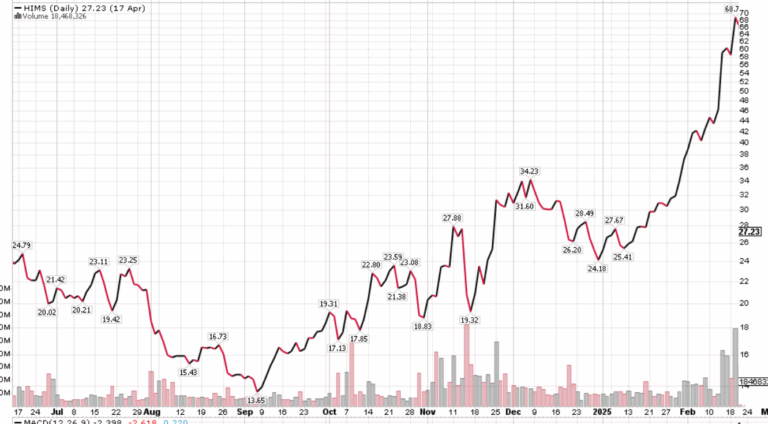What a $0.60 Stock Taught Me About Fear
The craziest thing on Wall Street in 2023 didn’t come from Silicon Valley or the Fed.
It came from a plastic bowl. The same one that’s sitting in every cupboard in America and has outlasted three microwaves and two marriages.
In 2023, Tupperware Brands basically told investors it was done for.
The SEC filing said, and I quote, “There is substantial doubt about its ability to continue as a going concern.”
Translation? Put a fork in us.
Sales falling. Debt climbing. Analysts agreed and declared it over.
That should’ve been the end of the story.
But markets, like stars, don’t always die quietly.
A few days later, Tupperware stock did the unthinkable: it exploded 700%.
No news. No buyout. No miracle turnaround.
Just—boom.
Barron’s called it “a rally that largely has gone unexplained.”
A finance professor told reporters it was “not based on anything rational.”
CNBC called it baffling.
But my friend (you might know him) saw exactly what happened. Because, shortly before this run, Tupperware’s stock showed up in an obscure FINRA report.

Most people have never even heard of this report.
But buried inside this dry list of letters and numbers is one of the strangest market anomalies I’ve ever seen.
It doesn’t tell you WHY a stock will go up.
But it does reveal when market mechanics have gone out of balance. Where fear or greed have pushed prices too far in one direction.
Let me explain.
Why They Don’t Want You to Know This
FINRA stands for the Financial Industry Regulatory Authority.
It’s not technically part of the government, but it’s what some call a “self-regulatory body.”
Put simply, it’s the referee that polices brokerages—the group that keeps firms honest, makes sure trades settle, and tracks who’s trading what.
But here’s what most people don’t realize:
FINRA collects and publishes some of the most detailed raw market data in existence.
To the untrained eye, a typical FINRA file looks like gibberish: hundreds of columns of ticker codes, settlement dates, and cryptic identifiers.
It’s not meant for retail eyes. It’s a raw data dump designed for compliance officers and high-paid quants.
BUT…

To the few who know what to look for, it’s like spotting seismic tremors before an earthquake.
The Tupperware trade was one example. But I could give you hundreds.
Like this one…
Remember When HIMS Skyrocketed?
Last year, Hims & Hers (HIMS) looked like a patient on life support.
The FDA had just banned sales of its obesity drug. Analysts were calling it overvalued—trading at nearly three times the industry average.
Insiders were heading for the exits.
And the final blow came when the CEO unloaded $6.2 million of his own stock.
On paper, the message was clear: get out while you still can.
Then—suddenly—its ticker appeared inside a FINRA report early this year. A week later, the stock went insane.
Anyone who knew how to read that report could have turned $5,000 into $25,000 in a week.

It happened again with SunPower, a solar firm on the brink of bankruptcy. The data flashed mid-April.
Two days later, shares ripped higher—3,200% in less than a month.
It happens all the time, actually. And here’s the part I love most…
Fear Doesn’t Matter
It doesn’t matter what CNBC is screaming about. It doesn’t matter what the Fed says. And it doesn’t even matter if the company itself looks doomed.
When this anomaly hits—it overrides everything.
In 12 months, a friend of mine, JC, found 42 instances of this same pattern—almost one every week.
None of it made sense. Bad news everywhere. Analysts bearish. Insiders selling.
Didn’t matter either way… the stocks exploded.
When I asked him, he told me he’s been exploiting this setup for decades.
He doesn’t bother predicting what the Fed or regulators will do. He just studies where fear (or greed, or panic, or stupidity) has created formations that are stretched to breaking.
When that happens, the reversals are almost always violent.
It might seem complicated, but some ideas are hard to express in an article—you have to see them play out.
So Doug and I recently went into the studio to break it down. What he’s doing, how it works, and why he believes AI could ignite the next wave of high-flying stocks starting November 11.
If you want to see the next “code” before it triggers, click here now.










